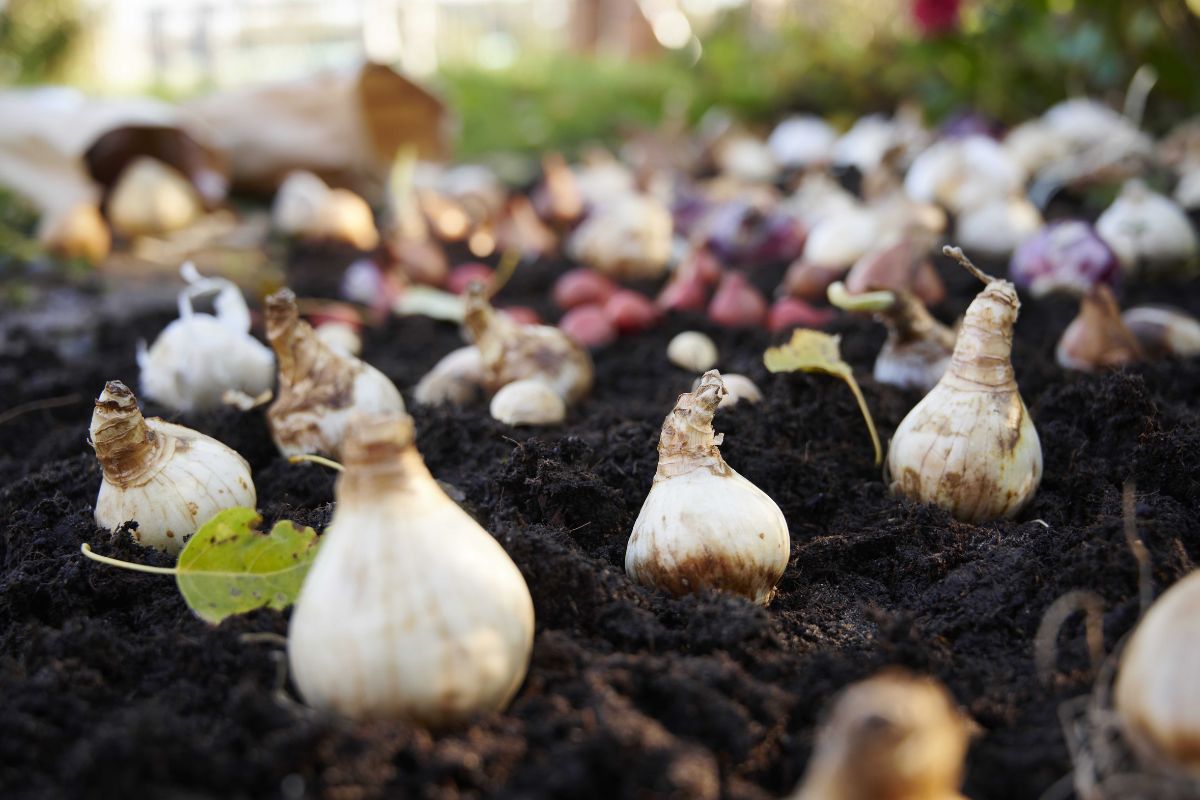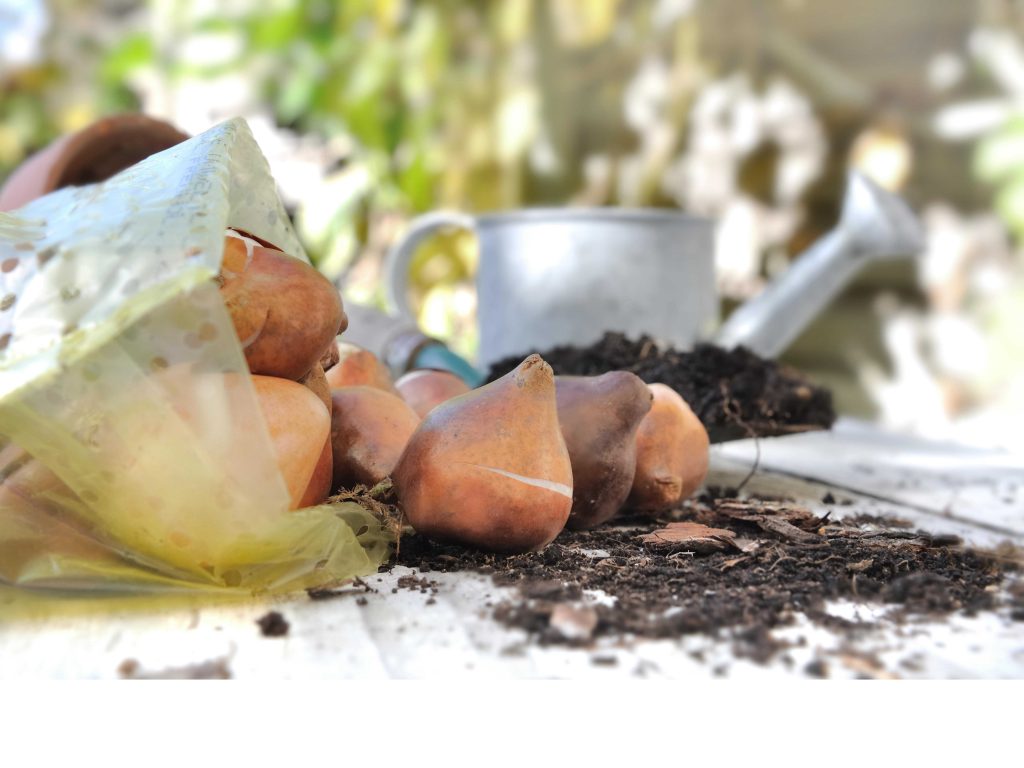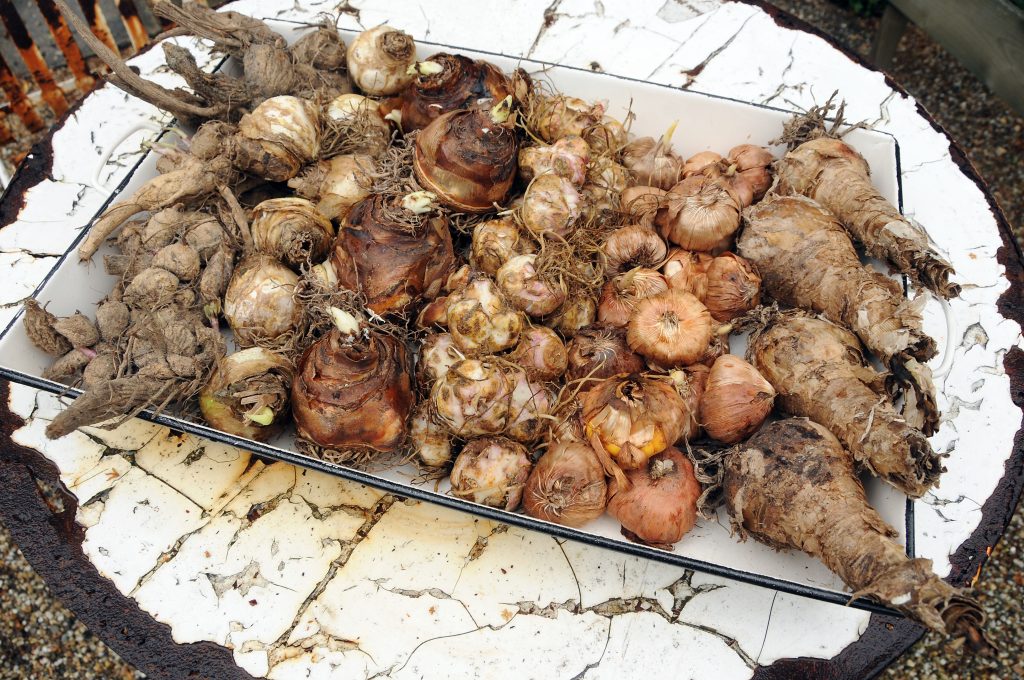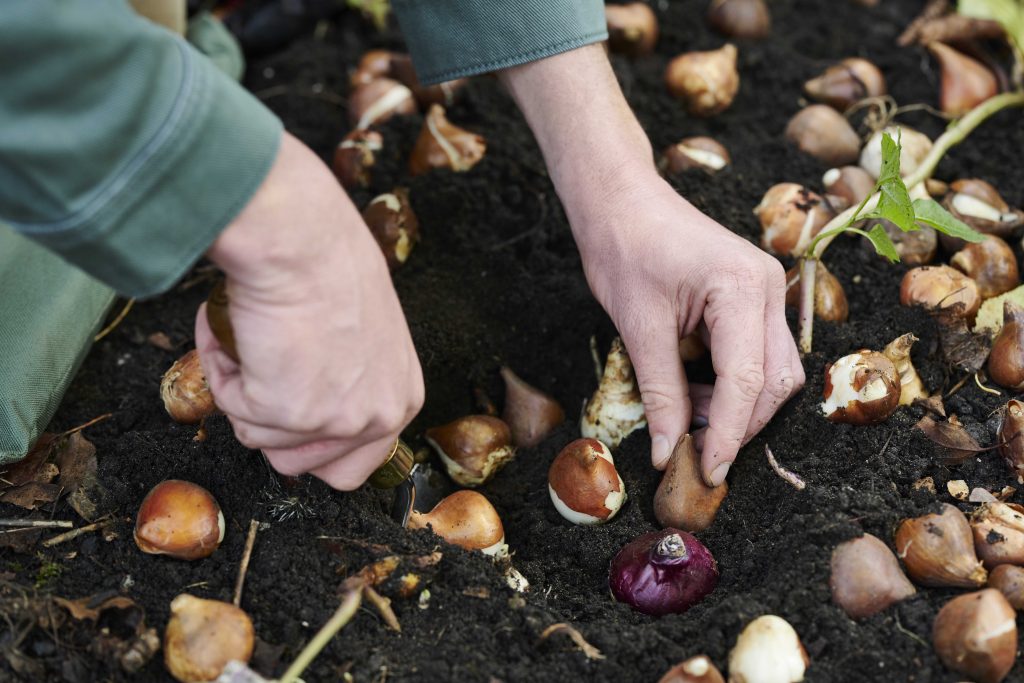
It’s That Time Again! Plant Your Fall Bulbs
Bulbs have a little flower inside that won’t let you down next spring. Planting flower bulbs is just a matter of doing it – you don’t need a green thumb! And success is guaranteed. Anyone who plants them now can look forward to colour next spring.
Table of Contents
When to plant
Bulbs can be planted as soon as you get them home, even as early as September. There’s no such thing as planting them too early. Even so, the best time to plant flower bulbs is between mid-October and the end of November. At that time, the weather is still a little on the nice side and the soil is still warm. This is also the time when gaps in the border often appear and can easily be filled with flower bulbs. Flower bulbs that go into the ground during this period have plenty of time to develop a good set of roots. This makes it easier for them to withstand any approaching frost.
Wait for cooler days
What if it’s early in the bulb planting season and you won’t be planting your flower bulbs straightaway? Store them in a dry place at a temperature between 15 and 20 degrees. In a hall closet or shed would be ideal, but not in the refrigerator or on a window sill.
How to Plant
Place the bulb in the ground with its pointed end up and the root crown facing down. The root crown is the horseshoe-shaped end of the bulb found on the underside of the widest part of the bulb.
Planting is simple. In a sunny location, use a trowel to make a planting hole measuring around 40/50 cm in diameter – or smaller, depending on how many tulips you want to plant there. Loosen the soil a little at the bottom of the hole. Place the flower bulbs in the hole and, between the bulbs, keep an average distance of about twice their diameter (or around 5 to 8 cm). Large bulbs need more room than small ones.
Are they a little closer together than that? No problem: flower bulbs will perform just as well! Bulbs have a little flower inside that won’t let you down next spring.
Cover the flower bulbs with an average of 10 cm of soil. Then tamp down the soil carefully with your hands.
Water Requirements
Recently planted flower bulbs that have been through rainfall usually need no watering. They get enough moisture from the soil, and rainwater will provide the rest. You only need to water them during extremely dry periods.
Designing Your Garden
Flower bulbs are available in practically every colour of the rainbow. And they also provide tremendous variety when it comes to shape, inflorescence, and flowering period. Depending on your taste and the effect you want to achieve, try experimenting with their rich palette of colours and don’t hesitate to combine flower bulbs of different kinds and with different flowering periods.






